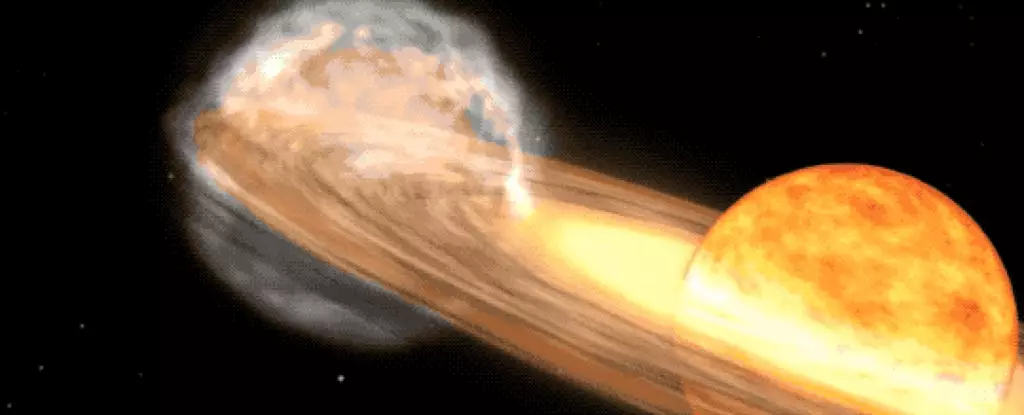In the vast expanse of space, there exists a binary star system located 3,000 light years away from Earth. This system, nestled in the constellation Corona Borealis, remains elusive to the naked eye due to its dimness. However, every 80 years or so, a fascinating phenomenon occurs within this system, leading to a spectacular flare-up that captures the attention of astronomers and stargazers alike. The exchange between the two stars in this system, locked in a deadly embrace, gives rise to a runaway nuclear explosion, resulting in a burst of light that travels through the cosmos. This explosion creates the appearance of a new star, shining as brightly as the North Star, in our night sky. This event, known as a nova, has been witnessed by humans a few times in history, with the first observation dating back to 1866 by John Birmingham, followed by a reoccurrence in 1946.
At the heart of this celestial spectacle lies the binary star system T Coronae Borealis, affectionately dubbed the “Blaze Star.” The system consists of a red giant, a cool dying star that has exhausted its hydrogen and expanded significantly, and a white dwarf, the dense core left behind after the shedding of its atmosphere. The size difference between these two stars is immense, with the white dwarf taking 227 days to orbit the red giant. As the red giant ejects matter that accumulates near the white dwarf’s surface, a buildup of mass occurs over approximately 80 years. Once the mass reaches a critical point, a runaway thermonuclear reaction ignites on the white dwarf, leading to a massive explosion with temperatures soaring to 100-200 million degrees Celsius.
Starrfield, an astronomer at Arizona State University, has been closely monitoring T Coronae Borealis since the 1960s and is eagerly anticipating the upcoming outburst. Recurrent novas like T Coronae Borealis are rare, with only around 10 occurrences observed in the Milky Way and neighboring galaxies. In contrast to normal novas that erupt every 100,000 years, recurrent novas display their explosive nature on a more human-friendly timescale due to the unique relationship between their component stars. The continuous interplay between the red giant and the white dwarf sets the stage for recurring astronomical displays that captivate and intrigue astronomers worldwide.
Despite the scientific significance of T Coronae Borealis’s impending outburst, the event’s appeal extends beyond the realm of advanced technology. While the James Webb Space Telescope stands ready to capture the cosmic spectacle, amateur astronomers and sky gazers have the opportunity to witness this celestial marvel firsthand. By simply looking towards the constellation Corona Borealis, individuals can partake in a rare astronomical event that promises to illuminate the night sky with its brilliance. As preparations ensue for the total solar eclipse set to grace the United States, the anticipation surrounding T Coronae Borealis’s impending nova serves as a reminder of the beauty and wonder that permeate the universe.
The impending flare-up of T Coronae Borealis offers a unique opportunity to delve into the mysteries of space and witness the awe-inspiring beauty of the cosmos. As astronomers and enthusiasts alike await this rare event, the celestial dance of the binary star system serves as a testament to the enduring fascination of the universe and the marvels it holds. Whether through advanced telescopes or a simple gaze at the night sky, the allure of space beckons us to explore and appreciate the wonders that unfold beyond our earthly confines.


Leave a Reply